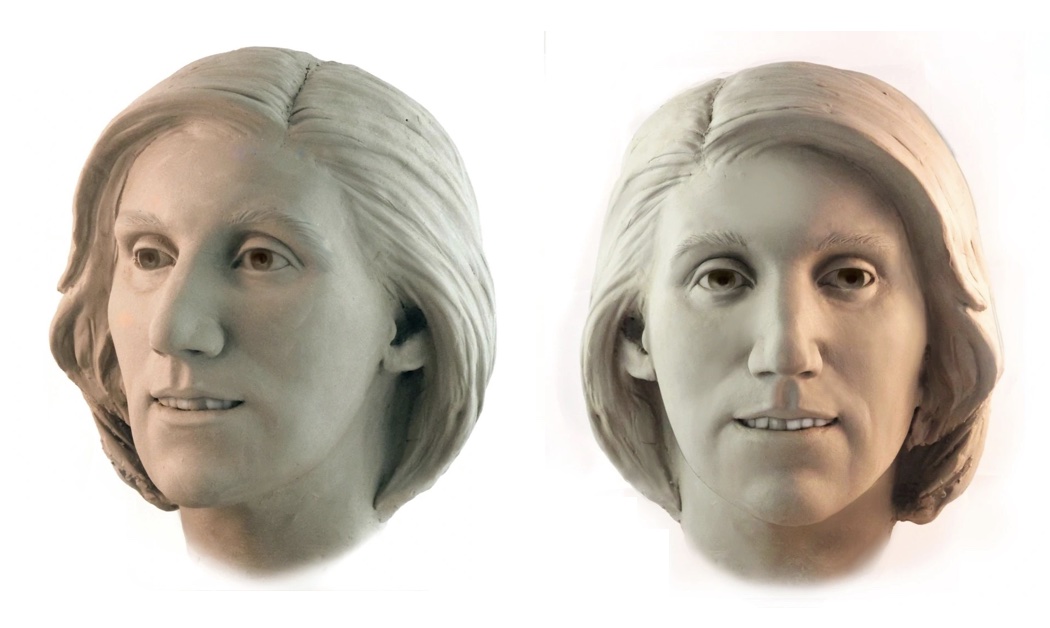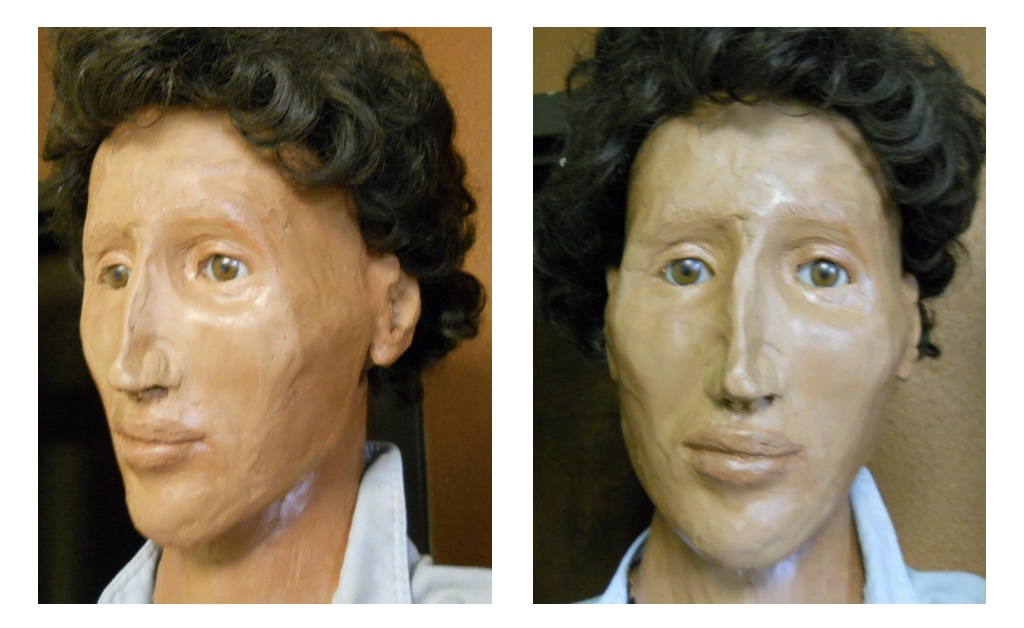Vancleave Jane Doe
Kimberly Ann Funk vanished in 1990 and her body was found the following year, by the Mississippi Ward Bayou. Tragically, she wasn’t identified until 2021.
In early 1991, rabbit hunters came upon the skeletal remains of a young woman in the woods near the Ward Bayou in Vancleave, Mississippi. Investigators initially determined that the remains were likely from a Caucasian woman in her late 20s. It was not clear exactly when she had died but investigators estimated that she might have died up to three years before being located. The death was ruled a homicide, however there were few clues to her identity. A swimsuit had been found nearby and some jewelry as well, but that was it.
A clay model forensic facial reconstruction was developed based on the young woman’s skull to help generate leads to her identity. Law enforcement worked diligently with multiple media outlets, to solicit clues from the public, but the case eventually went cold as no one recognized the woman.
Decades later in 2012, Pascagoula Police Investigator Darren Versiga, former Jackson County Coroner Vickie Broadus, and sheriff’s investigators began re-examining cold cases in the area. As part of this effort, they submitted skeletal remains for Vancleave Jane Doe and other unidentified persons to NamUs. An STR profile was developed for Vancleave Jane Doe but the profile did not match in any database. The remains were then transferred to the Mississippi State Crime Laboratory.

My company, Othram , has an ongoing collaboration with the Mississippi State Crime Laboratory and local law enforcement, to examine skeletal remains in multiple unidentified persons cases. Many of these cases were submitted by Darren Versiga and his colleagues and many of these cases featured older skeletal remains, with no other evidence or leads to point to identity. These are the perfect sort of cases for Othram — few to no leads and only degraded/aged remains to work from. Othram specializes in helping identify people from forensic evidence, but we especially excel in older cases involving skeletal remains. We helped the Porchlight Project and BODE Technology develop a DNA profile for a woman that died in 1881. We also built the genealogical profile for the oldest solved NCMEC case . A lot of the time we help salvage remains burdened with high quantities of non-human (usually bacterial) DNA. The first case reported to the public as part of this collaboration was the case of Mississippi Delta Dawn. I have not yet written about this case yet, but for now we maintain a DNASolves® profile for Mississippi Delta Dawn for anyone that is interested to learn more.
For the Vancleave Jane Doe case, we teamed up the Mississippi State Crime Lab and the Jackson County Sheriff’s Office to use Othram’s advanced genetic testing platform to help produce leads that might lead to the identity of Vancleave Jane Doe or a relative of hers. Our lab received skeletal remains and used a combination of proprietary human enrichment steps and Forensic-Grade Genome Sequencing® to build a genealogical profile for the unknown woman. A lot of the work was funded by the Mississippi State Crime Laboratory and the rest of was supplemented by a generous donation by genetic genealogist and Mississippi native Carla Davis. Remember that name; there many other cases that Carla has supported and we are excited to report them all, in due time. We are incredibly grateful for her support.
The genealogical profile built at Othram revealed a genetic admixture commonly found in populations in Pennsylvania. Genealogy matching database searches produced a handful of genetic relatives, all of which were more distant than second cousins. Fortunately, family tree building and records research was straight forward, and in March 2021 the Othram genealogy team returned leads to Investigator Matthew Hoggatt at the Jackson County Sheriff’s Office. Working with a team of investigators, contact was made with a potential brother of the unknown woman. The brother, currently living in Pennsylvania, confirmed he had a sister named Kimberly Ann Funk, who would also go by the nickname “Star". She had been missing since 1990. Jackson County investigators worked with local law enforcement in Pennsylvania to test the familial relationship of the potential brother to the unknown woman and the follow-up DNA test then confirmed that Vancleave Jane Doe was, in fact, Kimberly Ann Funk, born February 7, 1960, and originally from Sharon, Pennsylvania. Kimberly also had a twin sister, but tragically she passed away in 2006. We were fortunate that her brother was able to assist in confirming the identification.

Investigators have since found that Kimberly moved to Mississippi between April and June in 1990. She traveled there from the Houston, Texas area. Efforts are now underway to piece together a timeline of Kimberly’s life between April, 1990, and the time she was found in February, 1991. Anyone with information on this case is encouraged to contact the Jackson County Sheriff's Office at 228-769-3063 or Mississippi Coast Crime Stoppers. I am excited to share that since Kimberly’s identification, many tips have been surfaced to investigators and I am optimistic that her family will eventually learn more about what might have happened.
I am also excited to share that Othram has other cases at various stages of testing and investigation with the Mississippi Crime Laboratory, Investigator Matthew Hoggatt and the Jackson County Sheriff’s Office. Investigator Hoggatt had this to say about our most recent collaboration:
With help from Othram, we have been able to solve cases that have remained unsolved for decades. The investigative research provided by Othram has allowed us to identify victims as well as criminals, and bring closure to families who have waited years for answers.
As a parting point, I will share that the DNA evidence in a lot of these older cases, involving unidentified remains, will generally consist of partial skeletal remains. Many of these skeletal remains will be aged, degraded, and loaded with bacteria and other non-human sources of DNA. You can build a DNA profile from almost anything but for it to be useful it has to be accurate and complete enough to enable analysis with genealogical databases and other relationship testing tools. Building useful genealogical profiles from older skeletal remains is not straightforward. Investigators must take care in where and how they get these bones processed. A typical DNA testing laboratory will not be equipped for this sort of work and you don’t want to end up burning evidence and budgets, without a profile or a profile that cannot be used to move an investigation forward.
If you want to learn more about the case, here are some great links:
-
Shelby Myers wrote a story about the case and also interviewed me to discuss Othram’s role in helping out investigators.
-
US News & World report reported the original announcement from law enforcement .
-
Othram maintains a profile on this case at DNASolves.com .
